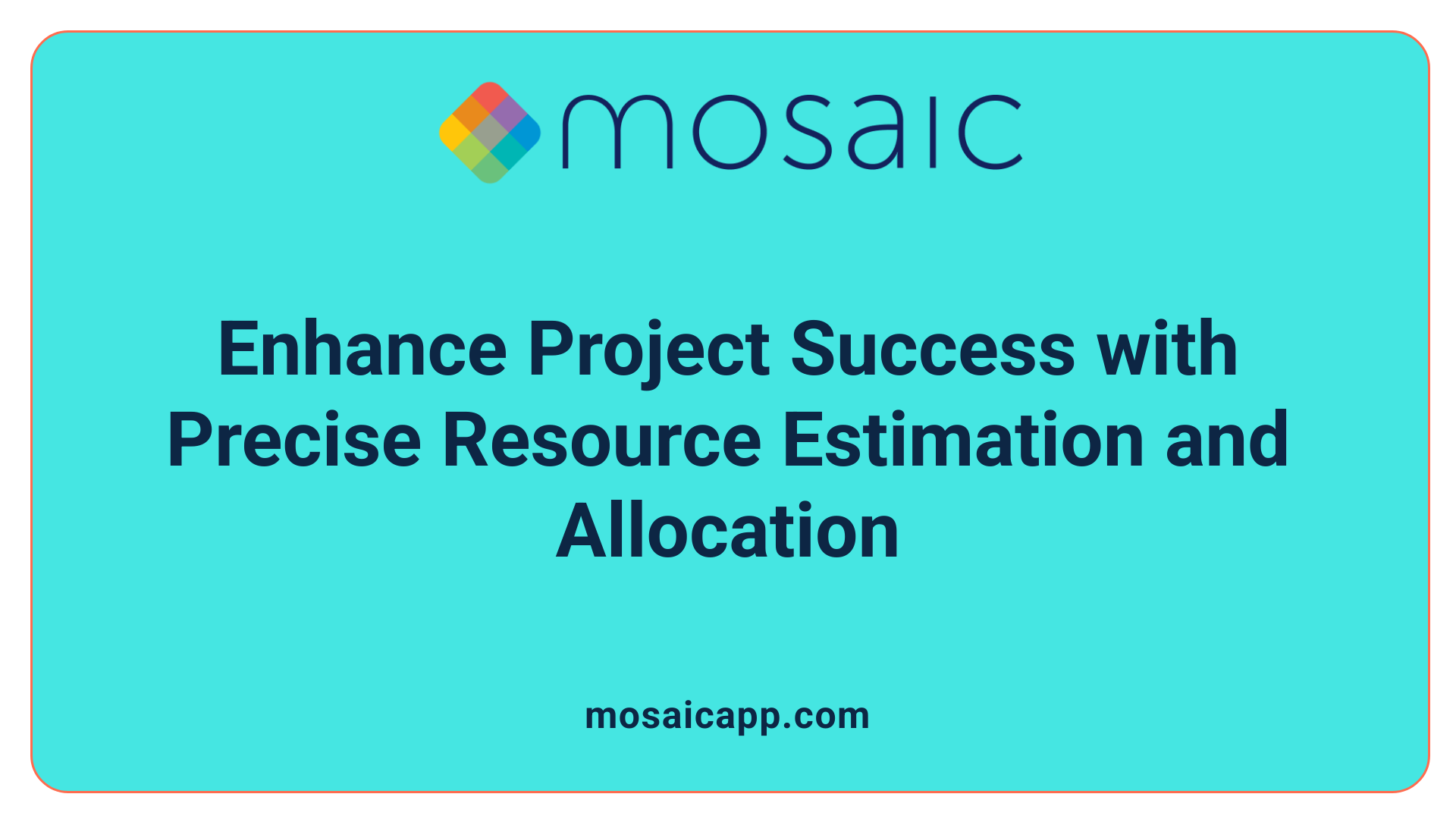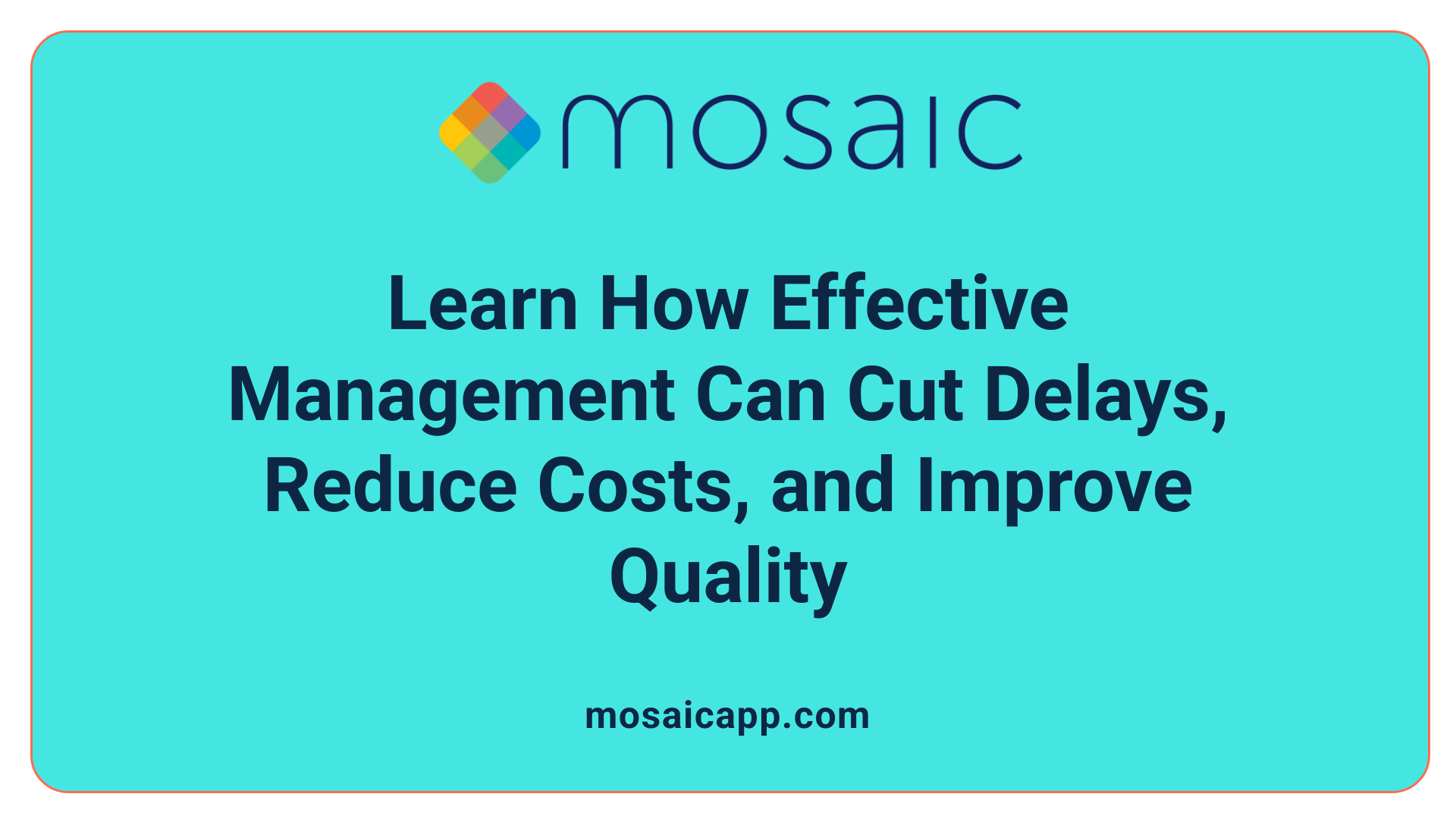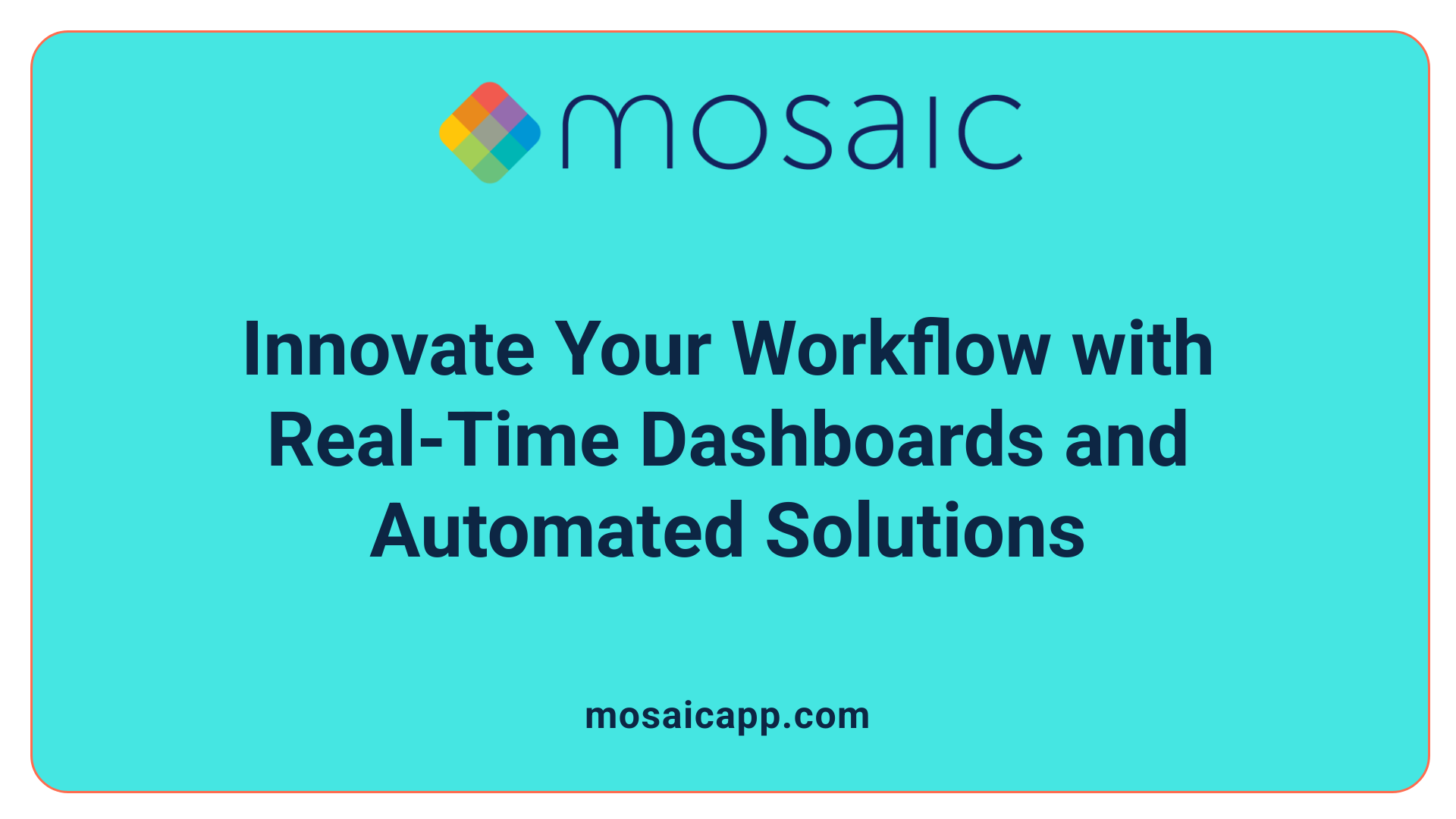Navigating the Challenges of Resource Bottlenecks
Resource bottlenecks remain a critical challenge in project management, often leading to delays, cost overruns, and compromised quality. However, evolving from these constraints to achieving strategic flexibility in resource allocation is key to sustaining project efficiency and success. This article explores how smart planning, technological integration, and strategic approaches transform resource bottlenecks into opportunities for agility and improved outcomes.
Fundamentals of Project Management Resource Planning Services

What are the key components of project management resource planning services?
Project management resource planning is a structured process essential for completing projects efficiently and on schedule. The core components encompass identifying and estimating all necessary resources, including personnel, equipment, and budgets. Precise resource estimation ensures that the project has the right capacity to meet demands without bottlenecks.
Defining roles and assigning responsibilities is crucial. This involves matching tasks to individuals based on skills and availability, considering constraints like time zones and planned vacations to avoid overloading team members.
Scheduling and capacity planning form a backbone for resource allocation. These activities map out timelines, balance workloads, and accommodate dependencies to maintain a realistic project schedule.
Continuous monitoring of resource utilization is vital. This allows project managers to track efficiency, detect potential overloads, and make timely adjustments. Forecasting and contingency planning are integrated to mitigate risks from unforeseen changes or shortages.
Effective communication and stakeholder involvement underpin successful resource management. Keeping all parties informed fosters collaboration, transparency, and alignment with project goals.
Software tools like ONES Project facilitate resource planning by providing features for task assignment, workload visualization, and real-time adjustments, enhancing accuracy and efficiency.
By combining these components, resource planning services support projects in achieving timely delivery, cost control, and quality standards, avoiding delays and improving team productivity.
From Bottlenecks to Efficiency: The Impact of Effective Resource Management

Consequences of Resource Bottlenecks
Resource bottlenecks occur when the demand on resources exceeds their capacity, leading to delays and inefficiencies. Such situations can result from labor shortages, machine failures, supply chain issues, or faulty planning. The impacts include missed deadlines, increased costs, customer dissatisfaction, and damage to the project's reputation, all of which threaten overall project success.
Effective Resource Management as a Success Factor
Effective resource management is vital for project success. By ensuring the right allocation of human, material, financial, and technological resources, projects can avoid delays and reduce inefficiencies. According to PMI’s Pulse of the Profession 2023, poor resource management contributes to 27% of project failures. Strategic resource planning and management transform workflows into streamlined and proactive processes that help deliver outcomes on time, within budget, and to quality standards.
Techniques for Optimizing Resource Use
Several techniques help optimize resource use, including:
- Resource Leveling: Adjusting task start and end dates, extending timelines if needed, and reallocating resources to balance workloads.
- Prioritization: Using scoring matrices to rank tasks by importance, deadlines, dependencies, and stakeholder value.
- Cross-Training: Developing team flexibility to reduce bottlenecks and reliance on single individuals, which Gartner notes leads to 30% fewer delays.
- Outsourcing and Contingent Labor: Addressing temporary capacity issues with external contributors supported by cloud-based collaboration tools.
- Automation and AI: Eliminating repetitive tasks and using predictive insights to improve efficiency, with 61% of organizations reporting gains from AI use.
Monitoring and Managing Resource Allocation
Monitoring tools like heat maps, dashboards, and real-time collaboration platforms such as Microsoft Teams or Slack enable transparency and quick adjustments. Tools like ONES Project and BrightWork 365 integrate data visualization and automated suggestions to oversee and adapt resource allocation effectively. Continuous review helps avoid overloads and idle time while ensuring responsiveness to project changes.
Benefits on Project Timelines, Budgets, and Quality
Effective resource allocation supports timely project delivery, budget adherence, and quality maintenance. It reduces risks of over- or under-skilled assignments, scope creep, and burnout. Flexibility through contingency planning and proactive communication enhances team morale and productivity. Ultimately, strategic resource management minimizes delays and cost overruns, leading to successful project execution.
| Aspect | Impact | Supporting Example / Tool |
|---|---|---|
| Resource Bottlenecks | Project delays, increased costs, customer dissatisfaction | Gartner report on delays reduction via cross-training |
| Resource Leveling Techniques | Balanced workload, reduced overallocation | ONES Project software |
| Monitoring Tools | Real-time updates, early detection of issues | BrightWork 365 with Power BI dashboards |
| Automation and AI | Increased efficiency, reduced repetitive work | Deloitte 2023 report on AI adoption |
| Strategic Communication | Enhanced collaboration, shared understanding | Microsoft Teams, Slack |
| Outcome Benefits | On-time delivery, budget control, quality assurance | PMI Pulse of the Profession 2023 |
Leveraging Technology to Enhance Resource Management Services

What role does technology play in project resource management services?
Technology plays a vital role in project resource management by enabling more efficient planning, scheduling, and allocation of resources through advanced project management software and automation tools. These tools help project managers identify resource availability, balance workloads, and prioritize tasks effectively.
Use of Project Management Software and Automation
Project management platforms such as ONES Project offer integrated scheduling, resource leveling, and automated suggestions that prevent overloading and underutilization. Automation reduces repetitive tasks, freeing teams to focus on high-value activities, while streamlined workflows increase overall project efficiency.
AI and Predictive Analytics in Forecasting and Optimization
Artificial Intelligence (AI) and predictive analytics provide forward-looking insights to anticipate resource demands and identify potential bottlenecks. According to Deloitte’s 2023 report, 61% of organizations using AI saw improved efficiency. These technologies enable proactive adjustments before resource conflicts arise.
Real-Time Dashboards and Collaboration Tools
Real-time dashboards consolidate resource and project data into accessible visual formats. Integration with tools like Microsoft Teams supports instant communication, promoting transparency and swift resolution of issues. Power BI dashboards offer centralized views, including portfolio summaries, project timelines, and individual task overviews, facilitating faster, informed decisions.
Examples: ONES Project, Microsoft Teams, Power BI Integration
ONES Project integrates resource management features with automation and forecasting capabilities tailored for complex project environments. Microsoft Teams enhances collaboration by providing a unified communication platform. BrightWork 365 leverages Power BI to convert intricate project data into actionable insights, improving resource allocation and performance tracking across teams.
By harnessing these technologies, organizations enhance project outcomes through improved resource utilization, timely delivery, and elevated team engagement.
Strategic Approaches to Resource Planning in Complex Projects
What strategies are commonly used in resource planning for complex projects?
Resource planning in complex projects integrates several strategies to ensure efficient workload distribution and alignment with business goals. Two primary techniques are resource leveling and resource smoothing. Resource leveling adjusts task timelines to resolve overallocations, potentially extending project schedules, while resource smoothing redistributes tasks within fixed deadlines to maintain schedule integrity without overburdening resources.
Capacity planning is essential to anticipate demands on personnel and equipment, preventing bottlenecks caused by labor shortages or supply chain issues. Tools like RACI (Responsible, Accountable, Consulted, Informed) charts and resource breakdown structures increase visibility, clarifying each team member’s role and resource allocation, fostering accountability and better organization.
Flexibility is another critical element, with strategies like cross-training employees to reduce dependency on single resources and outsourcing contingent labor during peak demands. This adaptability mitigates delays and supports sustained productivity.
Prioritizing tasks based on their criticality and strategic importance guides resource assignments, ensuring that high-impact activities receive focus. Scoring matrices help compare task deadlines, dependencies, and stakeholder value, optimizing resource use.
Monitoring resource utilization continuously is vital. Automation tools and dashboards integrated within project management software, such as ONES Project or BrightWork 365 with Power BI, offer real-time insights and predictive analytics. These technologies facilitate workload balancing, early identification of overextended teams, and proactive adjustments to resource plans.
Overall, a combination of structured planning, strategic prioritization, flexibility, and technology-driven monitoring enables companies to navigate complexity successfully and deliver projects on time and within budget.
Optimizing Resource Allocation Across Multiple Projects for Strategic Flexibility
How can organizations optimize resource allocation across multiple projects?
Effective resource allocation across multiple projects demands a strategic and technology-driven approach. Organizations utilize advanced project management platforms like Epicflow, which offer real-time data visualization, forecasting, and dynamic scenario simulations. These tools enable comprehensive tracking of resource availability and task prioritization across projects, preventing resource overallocation and identifying bottlenecks early.
Techniques to optimize resource allocation organization-wide
To balance workloads and maximize efficiency, organizations employ resource leveling across projects to smooth out fluctuations. By forecasting demand against capacity, they can adjust schedules, reassign tasks, and strategically prioritize projects aligned with business goals. Techniques such as scoring matrices help evaluate task importance considering dependencies, deadlines, and stakeholder value, facilitating focused resource use.
Tools for real-time data and forecasting like Epicflow
Epicflow and similar platforms deliver real-time dashboards that integrate data from multiple projects. These dashboards provide centralized views of resource commitments, project timelines, and upcoming bottlenecks. Coupled with predictive analytics, organizations gain foresight on resource gaps, enabling proactive reallocation and contingency planning.
Cross-project resource tracking and prioritization
Cross-project tracking ensures team members’ skills and availability are leveraged optimally. Organizing resources against multiple project demands allows managers to shift personnel fluidly where they add the most value. This also helps prevent burnout and underutilization by distributing workload evenly.
Promoting workforce flexibility through multi-skilling
Investing in cross-training and multi-skilling cultivates a versatile workforce capable of adapting across diverse project needs. Gartner's research suggests that flexible teams experience significantly fewer delays, enhancing overall project flow. This approach increases billability and lowers employee churn by matching assignments to individuals' skills and preferences.
Automation to support proactive resource management
Automation tools reduce the burden of repetitive tasks and generate alerts for potential conflicts or capacity shortages. By streamlining routine allocation processes, project managers can focus on strategic decisions and stakeholder communication. AI-based recommendations further enhance efficiency by suggesting optimal resource assignments and schedule adjustments.
Together, these strategies and tools create a responsive resource management framework that sustains strategic flexibility and drives timely, cost-effective project delivery across an organization's portfolio.
Transforming Challenges into Opportunities: Best Practices and Future Trends

Identifying and mitigating resource bottlenecks
Resource bottlenecks occur when demand surpasses resource capacity, causing delays and inefficiencies that jeopardize project success. Early detection through visual tools like heat maps in resource management software (e.g., Smartsheet, Monday.com) enables managers to redistribute workloads effectively. Prioritizing high-impact tasks using scoring matrices ensures that critical activities are assigned appropriate resources, relieving bottlenecks.
Cross-training and contingent labor strategies
Cross-training team members enhances flexibility by reducing dependence on individuals, leading to 30% fewer delays according to Gartner's 2022 report. Additionally, employing contingent labor or outsourcing tasks provides temporary capacity boosts. Cloud-based collaboration platforms facilitate smooth onboarding of external contributors, maintaining project momentum.
Use of AI and automation to improve efficiency
Automation and artificial intelligence streamline repetitive work and provide predictive insights, as evidenced by Deloitte’s 2023 finding that 61% of AI-adopting organizations improved efficiency. Integrating AI-driven tools supports optimized resource utilization, aiding in workload balancing and timely project delivery.
Continuous monitoring and stakeholder communication
Consistent monitoring paired with transparent communication through platforms like Microsoft Teams or Slack promotes accountability and real-time updates. This collaboration fosters a shared understanding of resource constraints, reducing project derailments and enabling swift response to emerging issues.
Integration of ERP, MES, and BI tools for comprehensive resource planning
Advanced systems such as ERP (SAP, Oracle), MES (SAP Digital Manufacturing), and BI tools (Power BI integrated with BrightWork 365) provide centralized data and dashboards. These tools facilitate detailed forecasting, workload tracking, and strategic analysis, supporting informed decision-making across resource management processes.
Aligning resource allocation with strategic business objectives
Developing comprehensive allocation plans involves aligning task assignments with skillsets, availability, and organizational goals. This strategic alignment reduces risks like scope creep, enhances employee engagement by matching tasks to preferences, and ensures projects are completed on time and within budget, fostering sustainable success.
Achieving Strategic Flexibility Through Proactive Resource Management
As project environments grow increasingly complex and dynamic, moving from resource bottlenecks toward strategic flexibility has never been more critical. Through detailed planning, leveraging cutting-edge technology, and employing adaptive strategies like resource leveling and cross-training, organizations can mitigate delays and inefficiencies. Real-time monitoring, transparent communication, and continuous adjustment enable project teams to remain agile and aligned with business objectives. Embracing these approaches not only enhances productivity and morale but also ensures timely delivery and improved quality, positioning projects and organizations for sustained success in an ever-changing landscape.
References
- Overcoming Resource Bottlenecks: Strategies for Balanced ...
- Resource Leveling: Balancing Workloads for Project Success
- Efficient Resource Planning: 5 Tips to Avoid Bottlenecks
- Mastering Resource Allocation in Project Management
- Project Resource Management - Allocation and Optimization
- The Importance of Resource Management in Project Success
- Benefits of Project Resource Management

